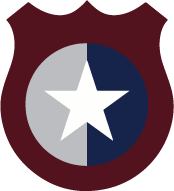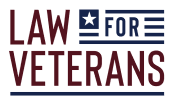The Family Medical Leave Act's Military Provisions
How does the Military Family Leave help my military family?
1.) Qualifying Exigency Leave
2.) Military Caregiver Leave
Who can use the Military Family Leave?
To be eligible for FMLA Military Family Leave, the employee needs to work for a covered employer.
Employers with at least 50 employees are considered Employers with less than 50 employees are not covered by FMLA. Local and federal government agencies and elementary, middle, and high schools are covered by the FMLA even if they have less than 50 employees.

Employees who work for a covered employer must also:
- Have worked at their job for at least 12 months;
- Have worked at least 1,250 hours (about 1 month 3 weeks) in the 12 months; and
- Work at a place where the employer has at least 50 employees within 75 miles.
The 12 months of employment do not have to be in a row. If the employee has not worked for 7 or more years was due to service covered by the Uniformed Services Employment and Reemployment Rights Act (USERRA).
What is Qualifying Exigency Leave?
When a relative of a service member has been told of an upcoming deployment, and they are eligible with a covered employer, they may qualify for exigency leave. By qualifying, exigency leave allows the relative to take up to 12 weeks (about 3 months) of FMLA leave for certain exigencies. Examples may be to set arrangements for day care for the service member’s child or to attend deployment ceremonies.
Events like the deployment of a service member can place a lot of stress and uncertainty on military families. Many of these changes require a lot of time and attention. Even though some of these things do not have anything to do with an illness or injury, family members may need time away from their job to take care of these issues. This is when Qualifying Exigency Leave is used.

Who can take Qualifying Exigency Leave?
Parent
Child
What does In Loco Parentis mean?
An adult if they provide day-to-day care or financial support for a child. A person who is not biologically related to a child may stand or have stood in loco parentis for purposes of FMLA.
For example, a neighbor may exercise their FMLA rights to take Qualifying Exigency Leave if they took on the role of raising their neighbor’s child, who later became a service member.
What is considered Covered Active Duty?
Once it is determined that a relative works at a covered employer, next it needs to be determined if the service member is on or on call to covered duty status.

Covered active duty means:
For service members in the Armed Forces, this means being deployed overseas.
For members of the Reserves and National Guard, this means deployment to areas outside of the United States, the District of Columbia, or any Territory or possession of the United States, including international waters.
What situations could be considered for Qualifying Exigency Leave?
What are the certification requirements for Qualifying Exigency Leave?
Employees that request leave for a qualifying exigency may
A copy of the service member's active-duty orders, or other official military documentation, which shows the service member is on active duty or called to active duty status.
- This documentation needs to only be shown once per deployment.
- The employer may contact the Department of Defense to request verification of the documentation.
A statement or description of the appropriate facts regarding the qualifying exigency:
- Facts may be the type of leave needed and documentation for it. This could be a copy of a meeting announcement, confirmation of an appointment with a counselor or school officual, a copy of a bill for legal or financtial arrangements, or R&R orders.
An approximate date of when the leave began or when it will begin and an estimate of how long and often any additional leave may occur,
Contact information of the individual or entity the covered employee is meeting with:
- The name, title, employer, address, telephone number, and e-mail address of the individual entity.
- The employer may contact the individual or entity and may verify the purpose of the meeting(s) but may not ask for any more information. The employer does not need permission from the covered employee to commuicate with the organization or the person being met with.
How is FMLA Qualifying Exigency Leave requested from my employer?
Notify the covered employer as soon as possible, preferably 30 days (about 4 and a half weeks) in advance.
The employer has 5 business days to notify whether the employee is eligible for FMLA
The employer should provide the covered employee with FMLA rights & responsibilities and may request certification documentation.
Provide enough information to employer to certify the need for leave within 15 calendar days.
The employer will notify the covered employee whether leave has been designated as FMLA within 5 business days.
It is important to also understand the general leave policy of the employer. There are instances where the employee must comply with both the FMLA regulations and the employer’s leave policy.
Will I continue to get paid under Qualifying Exigency Leave?
FMLA leave is unpaid. However, employees sick time, vacation time, or personal time saved up so that the employee may continue to get paid. It may be possible that an employee does not want to use any of their accumulated paid time-off hours/days, but their employer may require them to use it during FMLA leave.

Will I lose my employer health insurance while I am on Qualifying Exigency Leave?

While on FMLA leave, the employer of the employee as if they had never left. Employees may be required to continue to make any normal employee contributions while on Military Caregiver Leave.
What happens when I return from Qualifying Exigency Leave?
FMLA requires that when an employee returns from leave, they are , or one that is closely similar. If a new position is assigned, the new position needs to:
- Involve similar duties, responsibilities, and status;
- Include the same general level of skill, effort, responsibility, and authority;
- Provide identical pay, including identical premium pay, overtime, and bonus opportunities;
- Offer the same general work schedule and be at the same or nearby location.
If employees do not return before their FMLA leave expires, the employer is no longer required to restore the employee’s position.
How do I file a complaint?
FMLA is administered and enforced by the (WHD).
- : Interfere with, hold, or deny FMLA rights.
- Retaliate against an employee for filing a complaint or for working with the Wage and Hour Division, or
- Bring a private action to court.
Immediately contact the WHD if an employer violated FMLA rights.
Employees may call the WHD at 1-866-487-9243 or visit their
The information below is useful for filing a complaint:
- Full name;
- Address and phone number;
- The name of the company worked at;
- Location of the company (may be different from the actual job site);
- Phone number of the company;
- Manager or owner’s name; and
- Why an FMLA request was made and the employer’s response.
